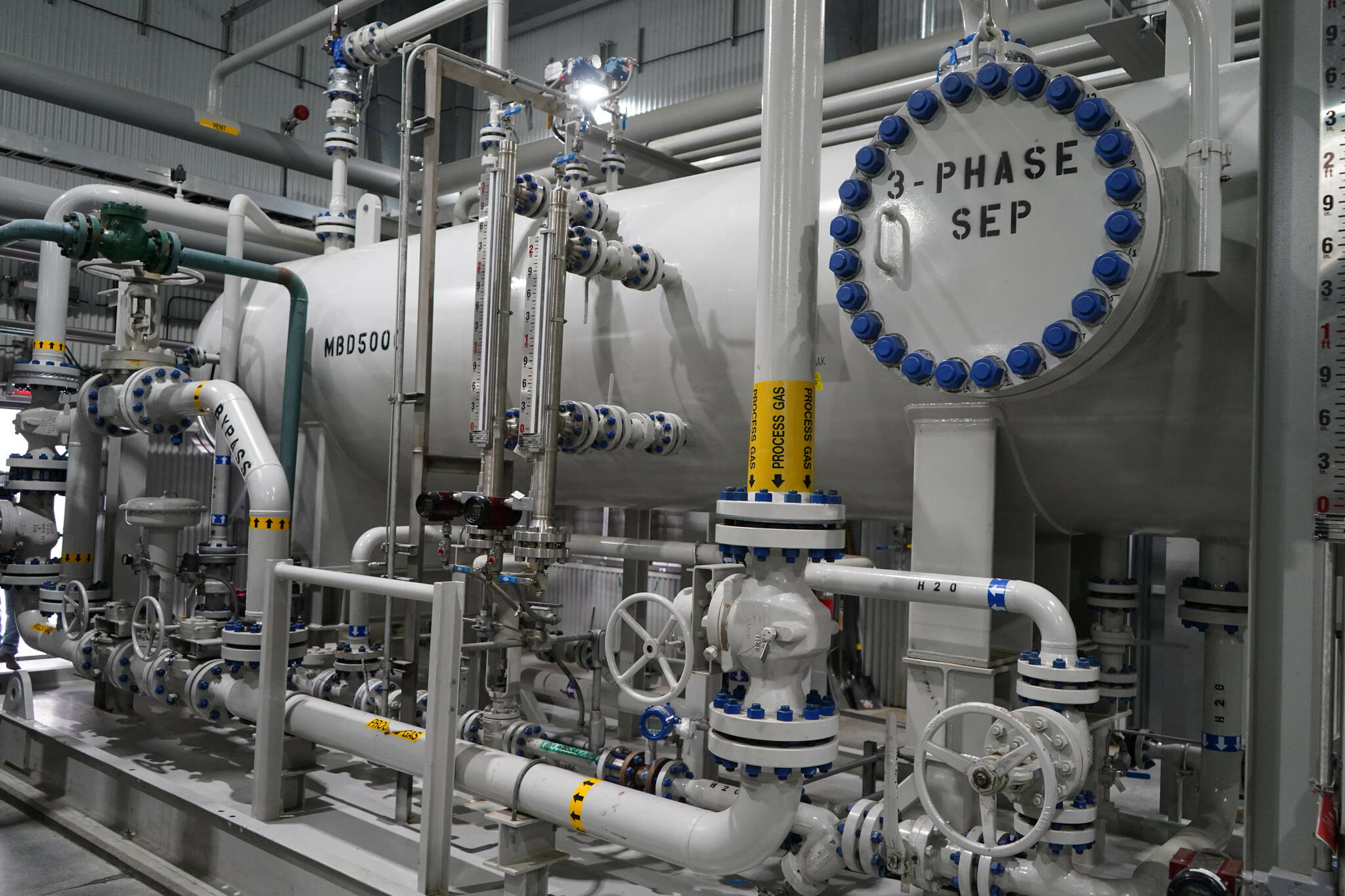The Alaska Gasline Development Corporation and New York-based Glenfarne Group have reached an agreement for Glenfarne to develop the Alaska LNG Project, AGDC announced Thursday. Glenfarne Founder and CEO Brendan Duval said he expects a final investment decision before the end of the year.
First reported by KDLL 91.9 FM, AGDC’s board of directors at a special meeting on Thursday adopted a resolution authorizing AGDC President Frank Richards to execute an agreement that has been negotiated over recent months. The conditions of that agreement are confidential.
A press release from AGDC Thursday evening says that Glenfarne, via a new affiliate called Glenfarne Alaska, will take on a majority stake in 8 Star Alaska, an AGDC subsidiary that was established to maintain ownership of the project. Glenfarne will own 75%, while AGDC and the state will retain the remaining 25%.
Glenfarne was founded in 2011 by Duval and has pointed to LNG as the “environmentally sensible” solution to fill the need for global energy while renewables are developed to combat climate change. Alaska is the third major LNG project under their purview, as the company is also developing LNG projects in Texas and Louisiana.
The agreement covers the full development of the Alaska LNG Project, which has been divided into multiple phases to account for the high costs of development. The three “subprojects” include an 807-mile 42-inch pipeline, an LNG export terminal in Nikiski expected to output up to 20 million tons of LNG per year, and a North Slope-based carbon capture plant that will “remove and safely store” 7 million tons of carbon dioxide annually, the release says.
While the complete project has been projected to cost $44 billion, AGDC has touted a report by Wood Mackenzie that says phase one, the pipeline, could be constructed for $10.8 billion and provide gas to Alaskans looking at a looming shortfall of natural gas supply.
“In light of steadily declining gas production from Cook Inlet, which has historically been Alaska’s primary in-state natural gas basin, phase one of the project will kick off immediately, prioritizing the development and final investment decision of the pipeline infrastructure needed to deliver North Slope gas to Alaskans as rapidly as possible,” the release reads.
After the agreement was announced, Richards, Duval and Alaska Gov. Mike Dunleavy held a press conference from Tokyo, Japan, early Friday morning because of the time difference. Dunleavy said he’s been traveling to several Asian countries to promote Alaska gas.
While some Asian countries have publicly expressed interest in Alaska LNG, none have signed any binding agreements to purchase gas. Dunleavy said that, while previous developments aren’t binding, “it’s the kickoff of deeper conversation.” He said he’s seen forward momentum with Taiwan, Thailand, Korea and Japan.
The Alaska LNG Project, Dunleavy said, has cleared through legal challenges, obtained its permits and rights of way, has support from the federal government and can meet demand in Asia.
“A lot of us are feeling confident that this is going to move to a concrete pipeline being built within two and a half years that will bring gas to Alaskans,” he said. “I think we’re poised to hear more good news.”
Richards said that Thursday’s agreement “was essentially us providing Glenfarne that 75% leadership role to be able to take this project forward.” Gas from the project is projected to start reaching Alaskans “in the very near term,” before construction and operation of the full project. Richards said that will bring jobs and revenue to Alaska.
Duval said that the Alaska LNG Project is “a standalone, attractive project.” He said that Glenfarne has advanced the project without the previously reported $50 million design backstop from the state because they want to move more quickly than it could have coalesced.
The project will announce a funding “consortium” in the coming weeks before the front-end engineering and design study, which is expected to be completed in the third quarter of 2025, before final investment decision in the fourth quarter, Duval said. A pipeline tariff on the gas being moved will “underwrite” the decision to move forward, but he said the cost “we think, is reasonable.”
The project will be funded by “private sector dollars,” he said, with the enhancement of a federal loan guarantee. Design and construction will not be funded by other governments, who won’t get involved until the latter phases when the export facility is constructed. There is some “appetite” from the U.S. government to accelerate the project, with meetings underway, but Duval said he had nothing to announce Friday.
“This project doesn’t need subsidizing,” he said. “This will be funded for profit.”
Sen. Jesse Bjorkman and Rep. Bill Elam, both R-Nikiski, on Thursday night both celebrated the development.
“This is a very exciting step forward that all Alaskans can celebrate,” Elam said in a press release from the Alaska House Republican caucus. “This is a hard-won victory that puts Alaskans — and my district — at the heart of our state’s energy future. It means lower costs, new revenue, and jobs. I’m ecstatic to see it moving ahead.”
The next development for the project, Duval said, will be the start of the front-end engineering and design study, “here in the coming weeks.” That work will extend for “approximately six months,” and the result will inform the timing of the final investment decision.
For more information, visit alaska-lng.com.
Reach reporter Jake Dye at jacob.dye@peninsulaclarion.com.

